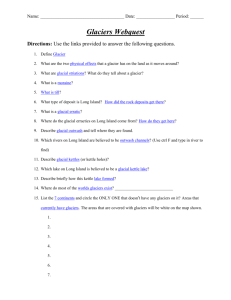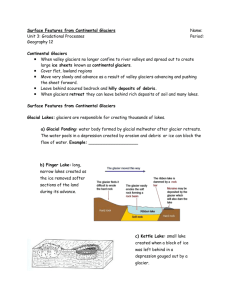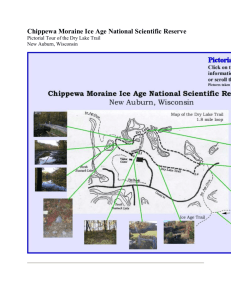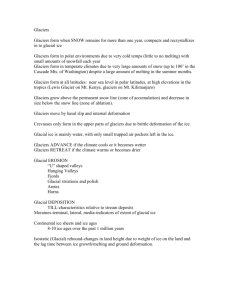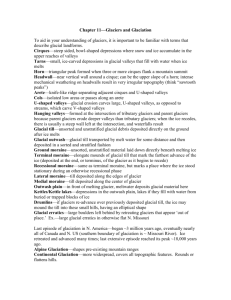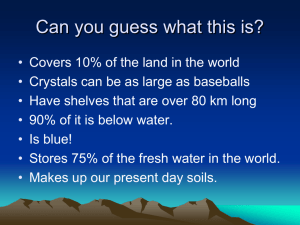Earth Science Honors Name Earth`s Dynamic Surface Block _____
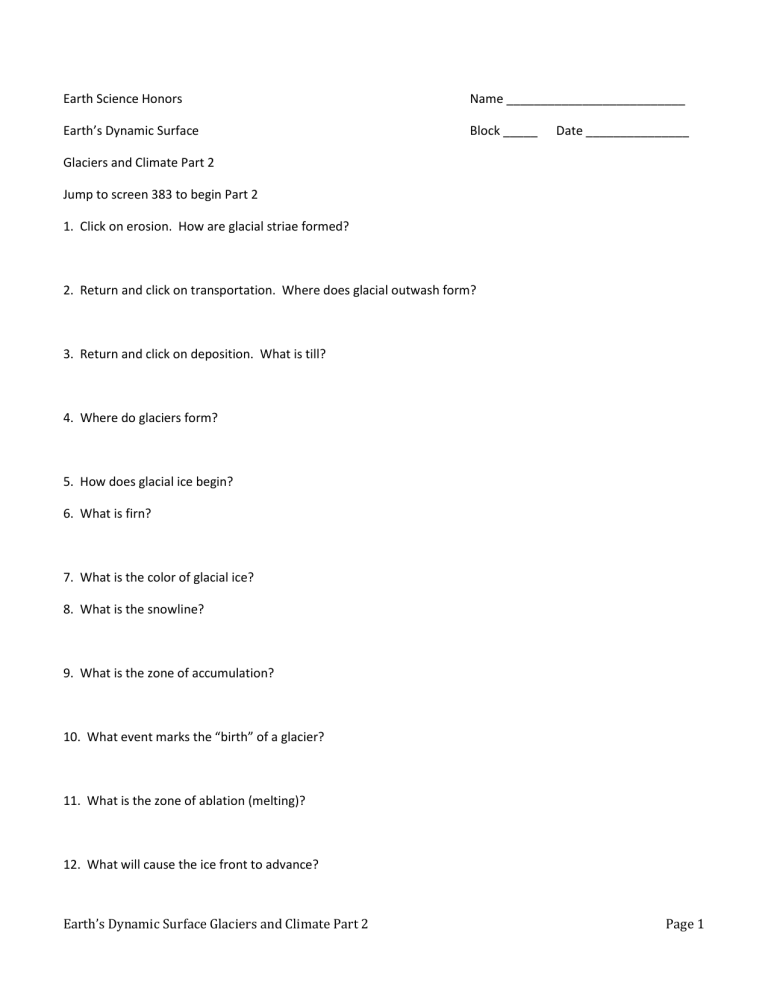
Earth Science Honors
Earth’s Dynamic Surface
Glaciers and Climate Part 2
Jump to screen 383 to begin Part 2
1. Click on erosion. How are glacial striae formed?
2. Return and click on transportation. Where does glacial outwash form?
Name __________________________
Block _____ Date _______________
3. Return and click on deposition. What is till?
4. Where do glaciers form?
5. How does glacial ice begin?
6. What is firn?
7. What is the color of glacial ice?
8. What is the snowline?
9. What is the zone of accumulation?
10. What event marks the “birth” of a glacier?
11. What is the zone of ablation (melting)?
12. What will cause the ice front to advance?
Earth’s Dynamic Surface Glaciers and Climate Part 2 Page 1
13. How does an end moraine form?
14. Place the letter of the following areas in the diagram on the line.
_____ Zone of ablation
_____ Zone of accumulation
_____ End moraine
_____ Snow line
Snowfall > melting
A
B
Snowfall < melting
Above here snow is found year round
C
D
Sediment pile
15. How does a proglacial lake form?
16. From screen 402- click on the number 1. What is a cirque? Make a small diagram.
17. Return and click on the number 2. What is a tarn? Make a small diagram.
18. Return and click on number 3. What is a horn? Make a small diagram.
19. Return and click on number 4. What is a hanging valley? Make a small diagram.
20. Return and click on number 5. How is a U-shaped valley formed? Make a small diagram.
21. Return and click on number 6. What is an arête? Make a small diagram.
22. Return and click on number 7. What does the moraine help mark?
Earth’s Dynamic Surface Glaciers and Climate Part 2 Page 2
23. Label each feature shown by the letter.
_____ Moraine
_____ Tarn
_____ Arete
_____ Cirque
_____ Hanging valley
_____ U- shaped valley
A
B
C
_____ Horn
G
24. From screen 404 click on number 1. What is lodgement till?
25. Return and click on number 2. What is a crevasse? Make a small diagram
26. Return and click on number 3. What is a proglacial lake? Make a small diagram
26. Return and click on number 4. What is an esker? Make a small diagram
27. Return and click on number 5. What is outwash?
28. Return and click on number 6. What is a kettle lake? Make a small diagram.
29. Return and click on number 7. What is a kame? Make a small diagram.
30. Return and click on number 8. What is a delta?
D
E
F
Earth’s Dynamic Surface Glaciers and Climate Part 2 Page 3
31. Return and click on number 9. What is a drumlin? Make a small diagram.
32. Identify each of the following areas in the diagram.
Use the proper letter.
_____ Drumlin
_____ Kame
_____ Kettle lake
A
C
_____ Crevasse
_____ Outwash
_____ Esker
_____ Delta
_____ Lodgement till
I
H
D
Gwater body
E
B
F
_____ Proglacial lake
33. A. Today how thick is the ice on Greenland __________________ meters
B. Today how thick is the ice on Antarctica ___________________ meters
34. What was the coastline like 18,000 years ago?
35. If West Antarctica Ice Sheet collapses, sea level would rise 20 feet. What areas of Colonial Heights would be affected by this?
36. If all the ice melted, how high would sea level rise? _____________ feet
37. What large glacial lake is the Great Salt Lake formed from?
Earth’s Dynamic Surface Glaciers and Climate Part 2 Page 4
Earth’s Dynamic Surface Glaciers and Climate Part 2 Page 5



